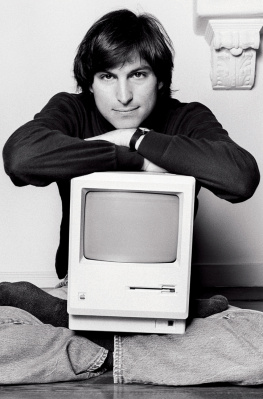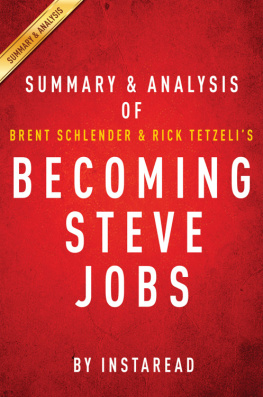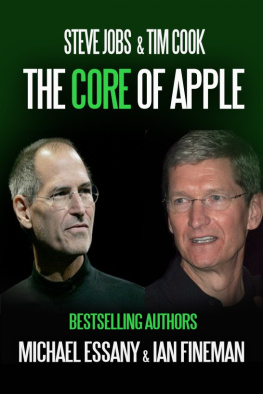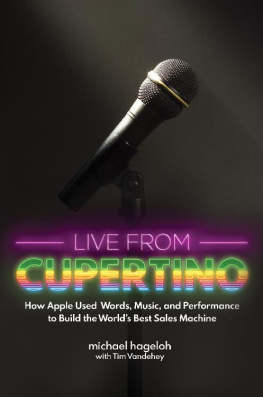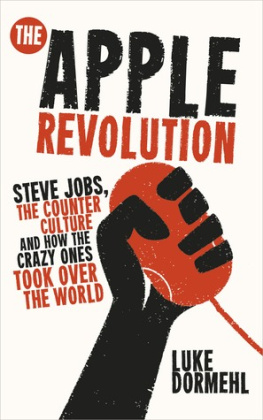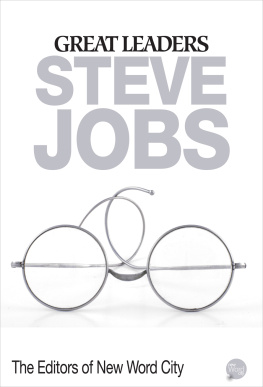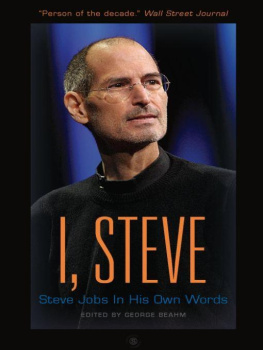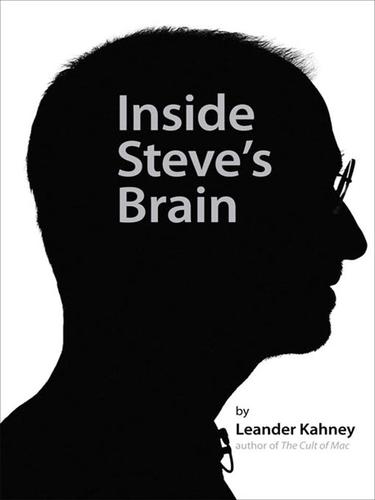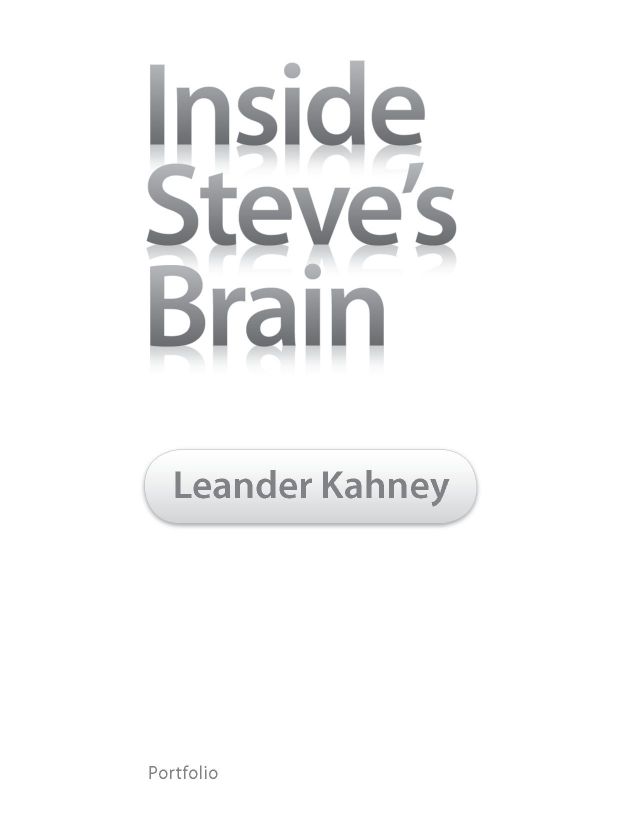Table of Contents
PORTFOLIO
Published by the Penguin Group
Penguin Group (USA) Inc., 375 Hudson Street, New York, New York 10014, U.S.A. Penguin Group (Canada), 90 Eglinton Avenue East, Suite 700, Toronto, Ontario, Canada M4P 2Y3 (a division of Pearson Penguin Canada Inc.) Peguin Books Ltd, 80 Strand, London WC2R 0RL, England Penguin Ireland, 25 St Stephens Green, Dublin 2, Ireland (a division of Penguin Books Ltd) Penguin Books Australia Ltd, 250 Camberwell Road, Camberwell, Victoria 3124, Australia (a division of Pearson Australia Group Pty Ltd) Penguin Books India Pvt Ltd, 11 Community Centre, Panchsheel Park, New Delhi - 110 017, India Penguin Group (NZ), 67 Apollo Drive, Rosedale, North Shore 0632, New Zealand (a division of Pearson New Zealand Ltd) Penguin Books (South Africa) (Pty) Ltd, 24 Sturdee Avenue, Rosebank, Johannesburg 2196, South Africa
Penguin Books Ltd, Registered Offices:
80 Strand, London WC2R 0RL, England
First published in 2008 by Portfolio,
a member of Penguin Group (USA) Inc.
Copyright Leander Kahney, 2008
All rights reserved
Library of Congress Cataloging-in-Publication Data
Kahney, Leander.
Inside Steves brain / Leander Kahney.
p. cm.
Includes bibliographical references and index.
eISBN : 978-1-4406-3257-0
1. Jobs, Steven, 1955- 2. Apple Computer, Inc.Management.
3. Computer industryUnited States. I. Title.
HD9696.2.U62J636 2008
338.761004092dc22 2007049270
Without limiting the rights under copyright reserved above, no part of this publication may be reproduced, stored in or introduced into a retrieval system, or transmitted, in any form or by any means (electronic, mechanical, photocopying, recording, or otherwise), without the prior written permission of both the copyright owner and the above publisher of this book.
The scanning, uploading, and distribution of this book via the Internet or via any other means without the permission of the publisher is illegal and punishable by law. Please purchase only authorized electronic editions and do not participate in or encourage electronic piracy of copyrightable materials. Your support of the authors rights is appreciated.
http://us.penguingroup.com
For my children, Nadine, Milo, Olin, and Lyle; my wife, Traci; my mother, Pauline; and my brothers, Alex and Chris. And Hank, my dear old dad, who was a big Steve Jobs fan.
Introduction
"Apple has some tremendous assets, but I believe without some attention, the company could, could, couldIm searching for the right wordcould, could die.
Steve Jobs on his return to Apple as interim CEO, inTime, August 18, 1997
Steve Jobs gives almost as much thought to the cardboard boxes his gadgets come in as the products themselves. This is not for reasons of taste or elegancethough thats part of it. To Jobs, the act of pulling a product from its box is an important part of the user experience, and like everything else he does, its very carefully thought out.
Jobs sees product packaging as a helpful way to introduce new, unfamiliar technology to consumers. Take the original Mac, which shipped in 1984. Nobody at the time had seen anything like it. It was controlled by this weird pointing thinga mousenot a keyboard like other early PCs. To familiarize new users with the mouse, Jobs made sure it was packaged separately in its own compartment. Forcing the user to unpack the mouseto pick it up and plug it inwould make it a little less alien when they had to use it for the first time. In the years since, Jobs has carefully designed this unpacking routine for each and every Apple product. The iMac packaging was designed to make it obvious how to get the machine on the Internet, and included a polystyrene insert specially designed to double as a prop for the slim instruction manual.
As well as the packaging, Jobs controls every other aspect of the customer experiencefrom the TV ads that stimulate desire for Apples products, to the museum-like retail stores where customers buy them; from the easy-to-use software that runs the iPhone, to the online iTunes music store that fills it with songs and videos.
Jobs is a control freak extraordinaire. Hes also a perfectionist, an elitist, and a taskmaster to employees. By most accounts, Jobs is a borderline loony. He is portrayed as a basket case who fires people in elevators, manipulates partners, and takes credit for others achievements. Recent biographies paint an unflattering portrait of a sociopath motivated by the basest desires to control, to abuse, to dominate. Most books about Jobs are depressing reads. Theyre dismissive, little more than catalogs of tantrums and abuse. No wonder hes called them hatchet jobs. Wheres the genius?
Clearly hes doing something right. Jobs pulled Apple from the brink of bankruptcy, and in ten years hes made the company bigger and healthier than its ever been. Hes tripled Apples annual sales, doubled the Macs market share, and increased Apples stock 1,300 percent. Apple is making more money and shipping more computers than ever before, thanks to a string of hit productsand one giant blockbuster.
Introduced in October 2001, the iPod transformed Apple. And just as Apple has been transformed from a struggling also-ran into a global powerhouse, so has the iPod been transformed from an expensive geek luxury into a diverse and important product category. Jobs quickly turned the iPod from an expensive, Mac-only music player that many people dismissed into a global, multibillion-dollar industry that supports hundreds of accessory companies and supporting players.
Quickly and ruthlessly, Jobs updated the iPod with ever newer and better models, adding an online store, Windows compatibility, and then video. The result: more than 100 million sold by April 2007, which accounts for just under half of Apples ballooning revenues. The iPhone, an iPod that makes phone calls and surfs the Net, looks set to become another monster hit. Launched in June 2006, the iPhone is already radically transforming the massive cell phone business, which pundits are saying has already divided into two eras: pre-iPhone and post-iPhone.
Consider a few numbers. At the time of this writing (November 2007) Apple had sold a whopping 100 million iPods, and is on track to ship more than 200 million iPods by the end of 2008 and 300 million by the close of 2009. Some analysts think the iPod could sell 500 million units before the market is saturated. All of which would make the iPod a contender for the biggest consumer electronics hit of all time. The current record holder, Sonys Walkman, sold 350 million units during its fifteen-year reign in the 1980s and early 1990s.
Apple has a Microsoft-like monopoly on the MP3 player market. In the United States, the iPod has nearly 90 percent market share: nine out of ten of all music players sold is an iPod. Three quarters of all 2007 model year cars have iPod connectivity. Not MP3 connectivity, iPod connectivity. Apple has distributed 600 million copies of its iTunes jukebox software, and the iTunes online store has sold three billion songs. Were pretty amazed at this, said Jobs at a press event in August 2007, where he cited these numbers. The iTunes music store sells five million songs a day80 percent of all digital music sold online. Its the third largest music retailer in the United States, just behind Wal-Mart and Best Buy. By the time you read this, these numbers will probably have doubled. The iPod has become an unstoppable juggernaut that not even Microsoft can compete with.



